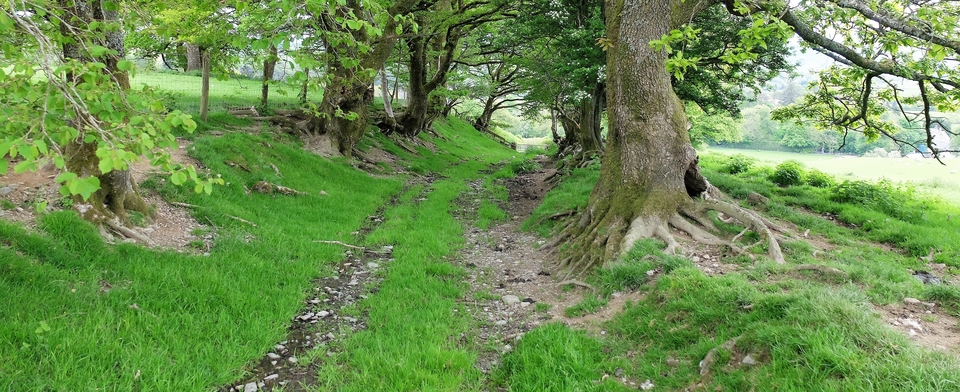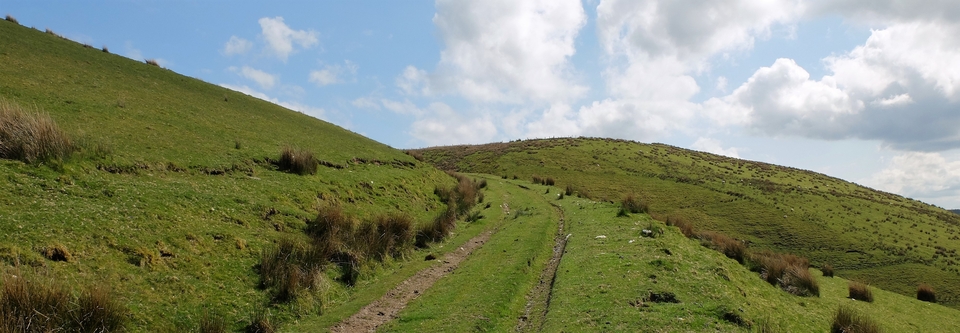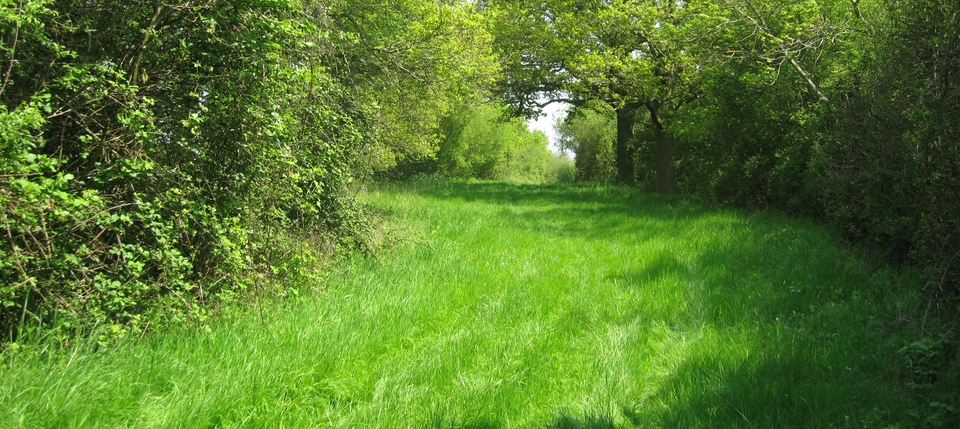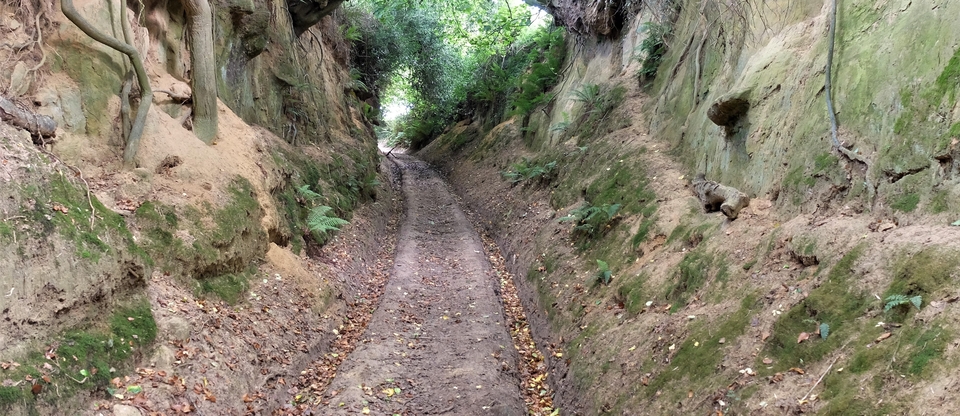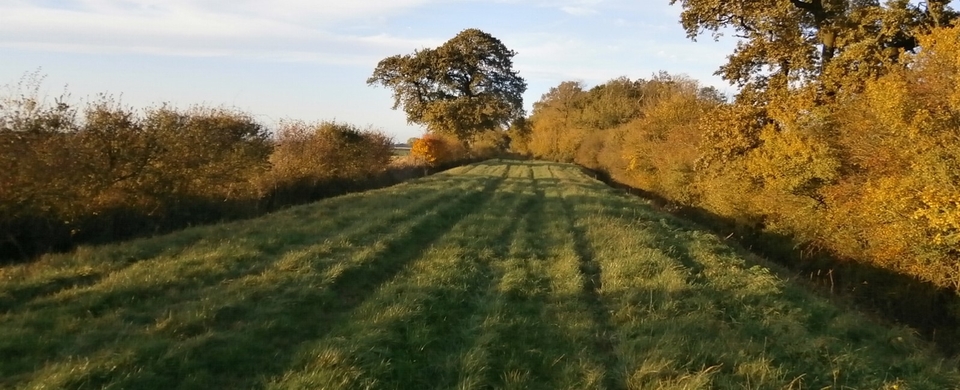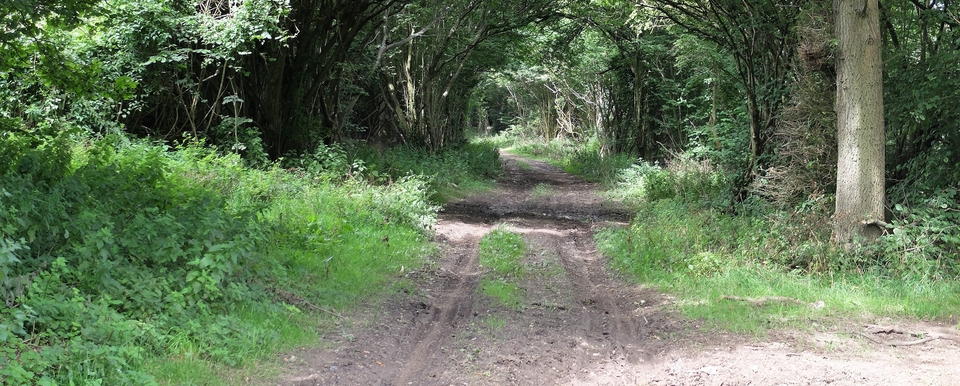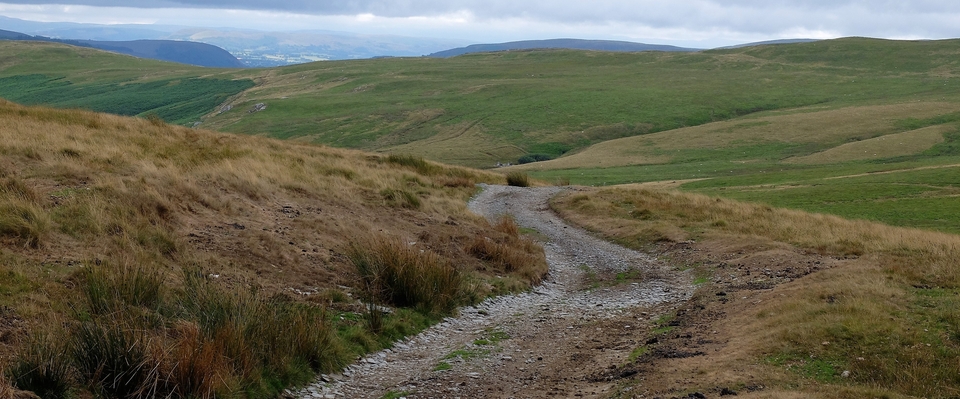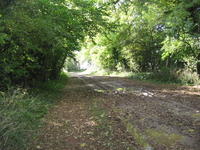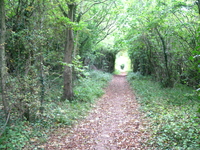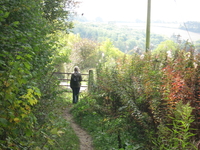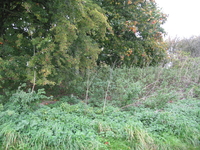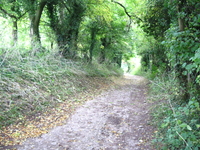Campden Lane
My thanks go to John Hughes for emailing me about this track, a beautiful Cotswold way between Cirencester and Chipping Campden. We walked part of it on an autumn day in 2015...
The Lane was made in the days when wool was king and the Cotswold Lion was king of kings1, so most of the passengers were sheep. We started at Stumps Cross (SP 076304) and walked the 3-mile stretch down to Hawling. It was enchanting: not many of the usual signs of drover-activity but, every so often, the unexpected...
At Stumps Cross a milestone2 with a difference2 and next to it Pike Cottage, indicating the convergence of busy roads. For the next mile or so the track changes from grand to humble and back again. It winds through trees, narrows, becomes overgrown then wide again before hitting a (very) minor road overlooking some prehistoric ‘strip lynchets'. These are terraces across the side of a hill, formed purposefully (or accidentally) by repeated ploughing. Anyway, they are different!
Passing the lynchets, we returned to the bridleway at Lynes Barn and more curiosities kept turning up: a marker stone at 060269 – ‘here' is the only word we could read – and a starter-home for royalty at Crab Bottom. The track hits another metalled road, briefly, before going up the hill where there is an old pond at 056256 (#4). The nettles around it made us think that cattle used the route as much a sheep.
From there to Roel. It was Rowell until recently, had 7 cottages in 1861 (and 50 inhabitants). The Lord of the Manor of Rowell had feudal rights over Cutsdean, we were told, and 1000 years ago Rowell was more important than Hawling3.
The icing on the cake was the road down to H., which hit bedrock (#5). Not many walks make me want to go back in time as much as this one did.
(From Farmcote Wood the saltway runs parallel only a few hundred yards to the west. Drovers would have used salt roads, so why the need for both?)
1 Originally the lane may have continued as far as Coventry for wool to be dyed “Coventry Blue” by a method known only to Godivas. Their football club is known as The Sky Blues.
2 STOW. 8 MILES TEWKSBURY. 12
3 The modern Hawling is comparatively new. The ancient village, a field to the north-east, was abandoned because of sheep.
